Reed switches: control methods, examples of use
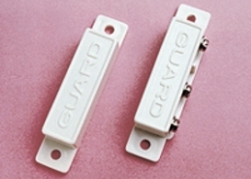 Reed switches have a number of mechanical and electrical parameters that characterize their properties. These parameters can be divided into two large groups: mechanical and electrical.
Reed switches have a number of mechanical and electrical parameters that characterize their properties. These parameters can be divided into two large groups: mechanical and electrical.
The mechanical parameters include the magnetomotive actuation force. This parameter shows at what value of the magnetic field the contact is released and released. In the technical documentation, this is referred to as the magnetomotive actuation force (denoted by Vav) and the magnetomotive releasing force (denoted by Votp).
Important parameters of the reed switch, in some cases the main ones, is the speed of its operation and release. These parameters are usually measured in milliseconds and are designated respectively as tav and totp, which generally characterize the speed of the reed switch ...
DIY computer power supply repair
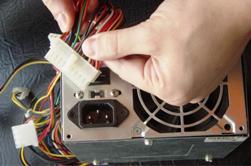 The low reliability of Russian power grids is the reason for the failure of household equipment. In the system units of stationary computers, after the operation of the operating system is completed, despite the apparent inactivity, the power supply remains permanently connected to the network. In this state, he is at risk of exposure to power surges.
The low reliability of Russian power grids is the reason for the failure of household equipment. In the system units of stationary computers, after the operation of the operating system is completed, despite the apparent inactivity, the power supply remains permanently connected to the network. In this state, he is at risk of exposure to power surges.
The use of network filters is corrected only by the fact that they have a shutdown button, which is more effective protection than the specified protective and filtering functions.
If you have installed a high-quality power supply of famous manufacturers and power exceeding 400 watts, then it is more reasonable to buy a new one may be an attempt to self-repair a failed power supply. First of all, you need to remember that the power supply is used ...
What are reed switches, how they are arranged and work
 Switching devices or just contacts are very widely used in various electrical and radio equipment. In order to improve operational properties, first of all, the service life and reliability of the connection, magnetically controlled sealed contacts called reed switches were developed.
Switching devices or just contacts are very widely used in various electrical and radio equipment. In order to improve operational properties, first of all, the service life and reliability of the connection, magnetically controlled sealed contacts called reed switches were developed.
The first samples of such contacts appeared in the 30s of the last century, and the first magnetically controlled contact was invented in 1922 in St. Petersburg by Professor V. Kovalenkov, for which he was issued the USSR copyright certificate No. 466.
In fact, this was the very first magnetically controlled contact, only without a sealing shell. A similar contact was first placed in the sealing shell by an American engineer W.B. Ellwood only in 1936 ...
Homemade dimmers. Part Five Some more simple schemes
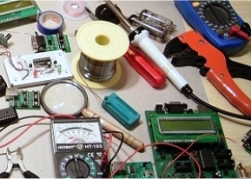 A dimmer on the analog of a single junction transistor. Despite the absolute dissimilarity of the schemes at first glance, they work almost identically. The brightness of the lamp is controlled by the phase method of controlling the thyristor, however, the load connection is somewhat different.
A dimmer on the analog of a single junction transistor. Despite the absolute dissimilarity of the schemes at first glance, they work almost identically. The brightness of the lamp is controlled by the phase method of controlling the thyristor, however, the load connection is somewhat different.
In the considered circuit, the regulator load, a light bulb, is included in the diagonal of the rectifier bridge for alternating current. The thyristor itself is included in the diagonal by a constant, rectified current.
On transistors VT1, VT2 assembled node smooth start, but for now, consider the operation of the regulator. If we mentally draw a vertical line between the VT2 transistor and resistors R3 and R4, then everything that turns out to be to the right of this line is actually a dimmer ...
To become a good electrician you need to constantly engage in self-education
 IN Visiting the site bgv.electricianexp.com, one of the best teachers of the Gomel State Polytechnic College Sergey Aleksandrovich Nikulin, who kindly agreed to cover some of my questions.
IN Visiting the site bgv.electricianexp.com, one of the best teachers of the Gomel State Polytechnic College Sergey Aleksandrovich Nikulin, who kindly agreed to cover some of my questions.
1. Sergey, you have been working at a college (technical school) for about 10 years now. Has anything changed during this time? How has the educational process and student attitudes changed?
A college (technical school) is the next stage of education after school or a vocational school and, unfortunately, in recent years, applicants who come to us have a low general level of knowledge, learning ability and desire to study. The capabilities of many of them do not allow them to master the specialty "electrician", in my opinion, quite complicated. But we have no other contingent, and therefore, we are teaching “untrained” ...
How to place outlets in living rooms
 The process of placing outlets is creative on the one hand, and on the other, it requires the use of logic and accurate calculation.
The process of placing outlets is creative on the one hand, and on the other, it requires the use of logic and accurate calculation.
Let's figure out how to correctly place the sockets on the example of a standard three-room apartment with a bedroom, a nursery and a hall. There are no approved rules for the placement of outlets in the apartment. The most important rule: sockets should be enough for everything and they should be in convenient places.
In the children's room, the most appropriate placement of the outlet block is near the desktop, and you need to add an outlet on the Internet to 3-4 electrical outlets. If a TV is planned in the room, then 1-2 sockets are placed near it. You can provide a socket for a nightlight ...
Alarm clock on ... lighting! An example of using an electronic timer
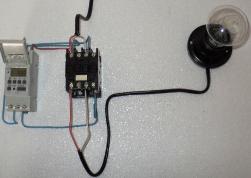 How to make lighting turn on strictly according to schedule? For example, you go to work at 7.40 and return at 17.20 and want the light to be on above the front door at that time.
How to make lighting turn on strictly according to schedule? For example, you go to work at 7.40 and return at 17.20 and want the light to be on above the front door at that time.
Imagine, come to the house, and you are already greeted by a burning lamp and no need to look for the switch in the dark, the light automatically turns on and after a certain time turns off independently, without your participation.
Or another example, you went to rest, but you don’t have an apartment signal, then you can create an “effect of presence”. In your absence, the light in the apartment itself will turn on and off as if no one had gone anywhere. I know people who turn off water heaters (electric titans) and electric heating boilers during the day, and turn them on only at night ...
Homemade dimmers. Part Four Thyristor Practical Devices
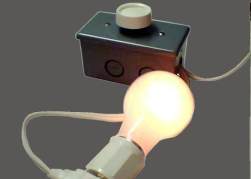 The basis of dimmers and power regulators are, as a rule, thyristors and triacs. The operation of these semiconductor devices was described in the previous three parts of the article, and now you can get acquainted with the device of some practical devices on thyristors. All schemes that will be considered use the phase regulation principle described at the end of the third part of the article.
The basis of dimmers and power regulators are, as a rule, thyristors and triacs. The operation of these semiconductor devices was described in the previous three parts of the article, and now you can get acquainted with the device of some practical devices on thyristors. All schemes that will be considered use the phase regulation principle described at the end of the third part of the article.
First, let's get acquainted with fairly simple schemes containing a small amount of detail, and at least therefore, the most affordable for repetition in amateur conditions. However, the schemes can be more complex, but the algorithm for their work is still the same - the brightness of the light source is adjusted. Sometimes there are circuits that combine the dimmer and twilight switch itself, or a scheme for smoothly turning on the lamp ...
